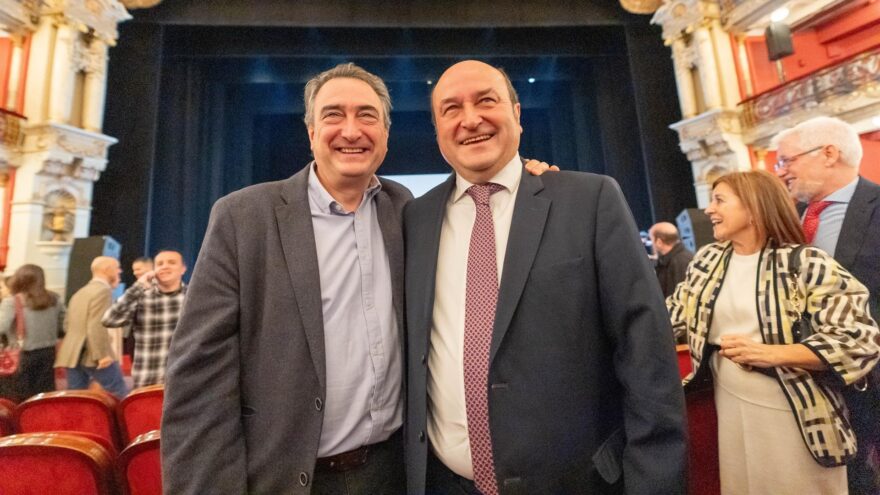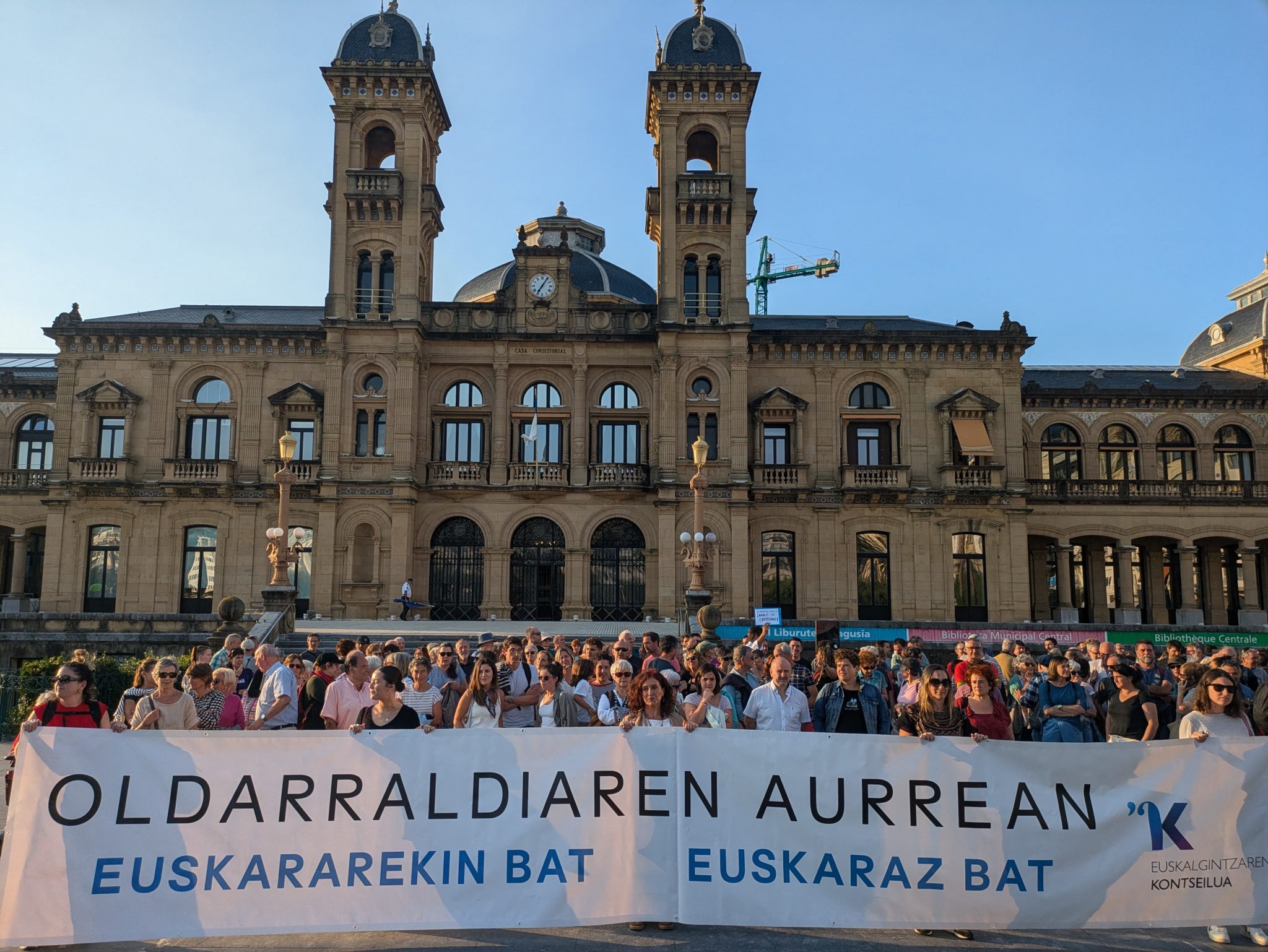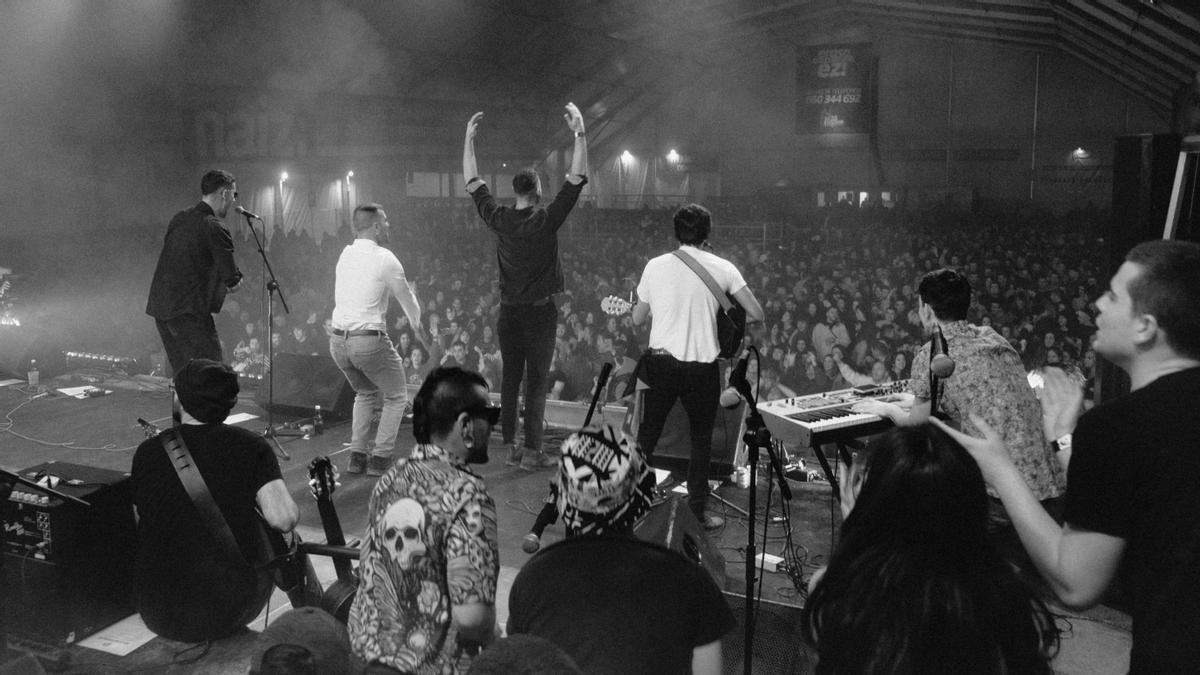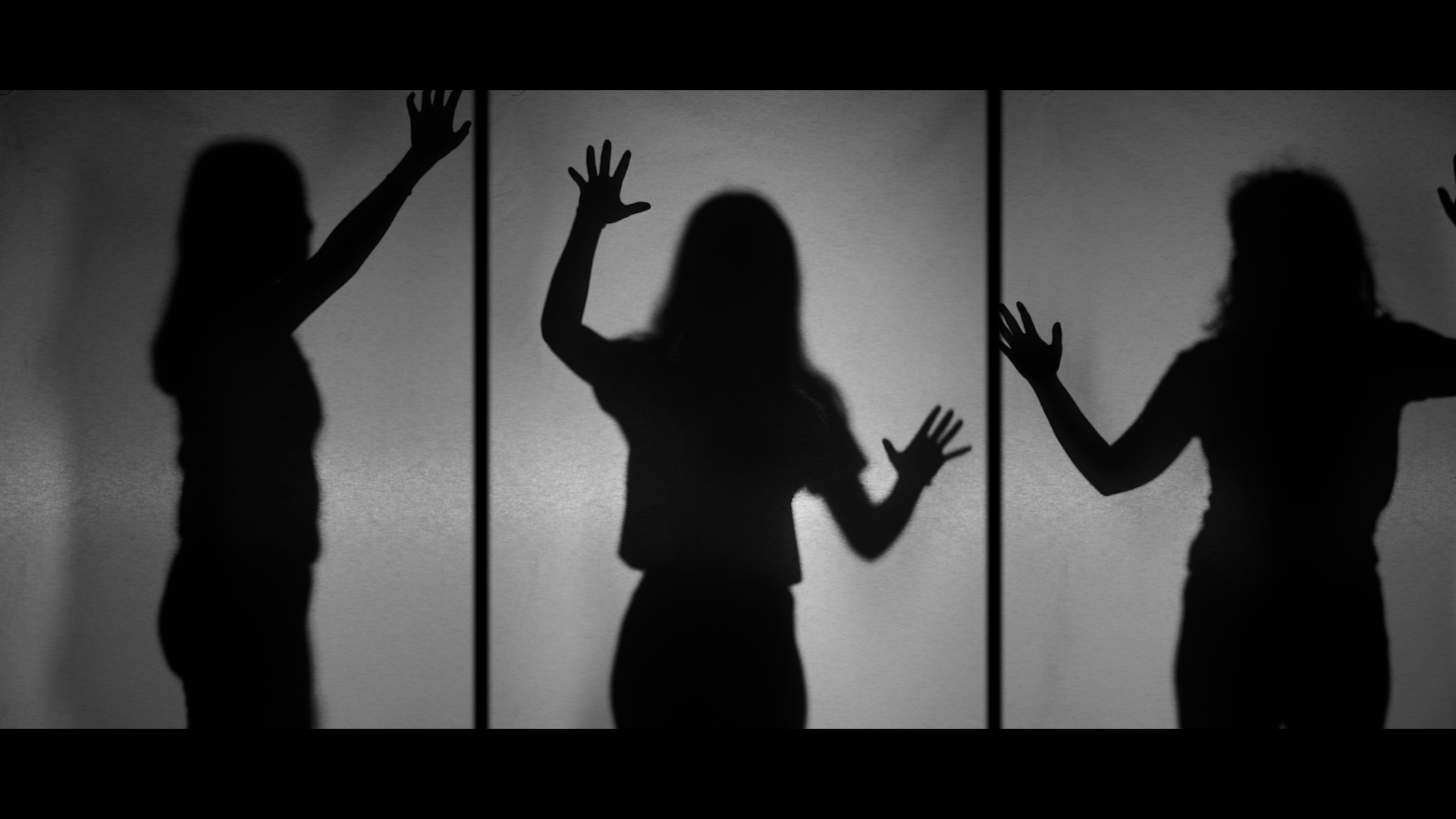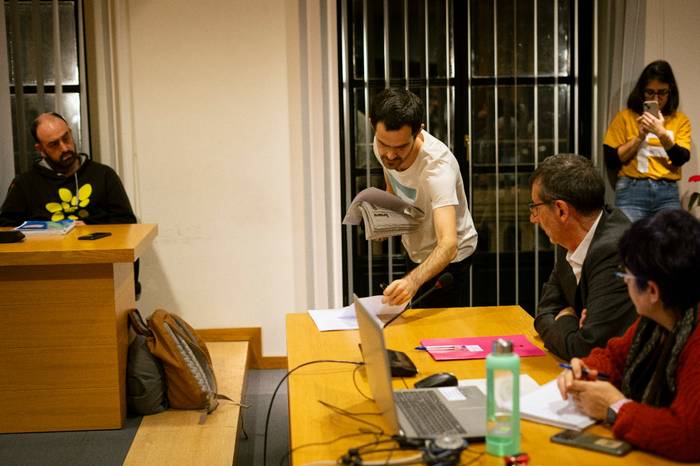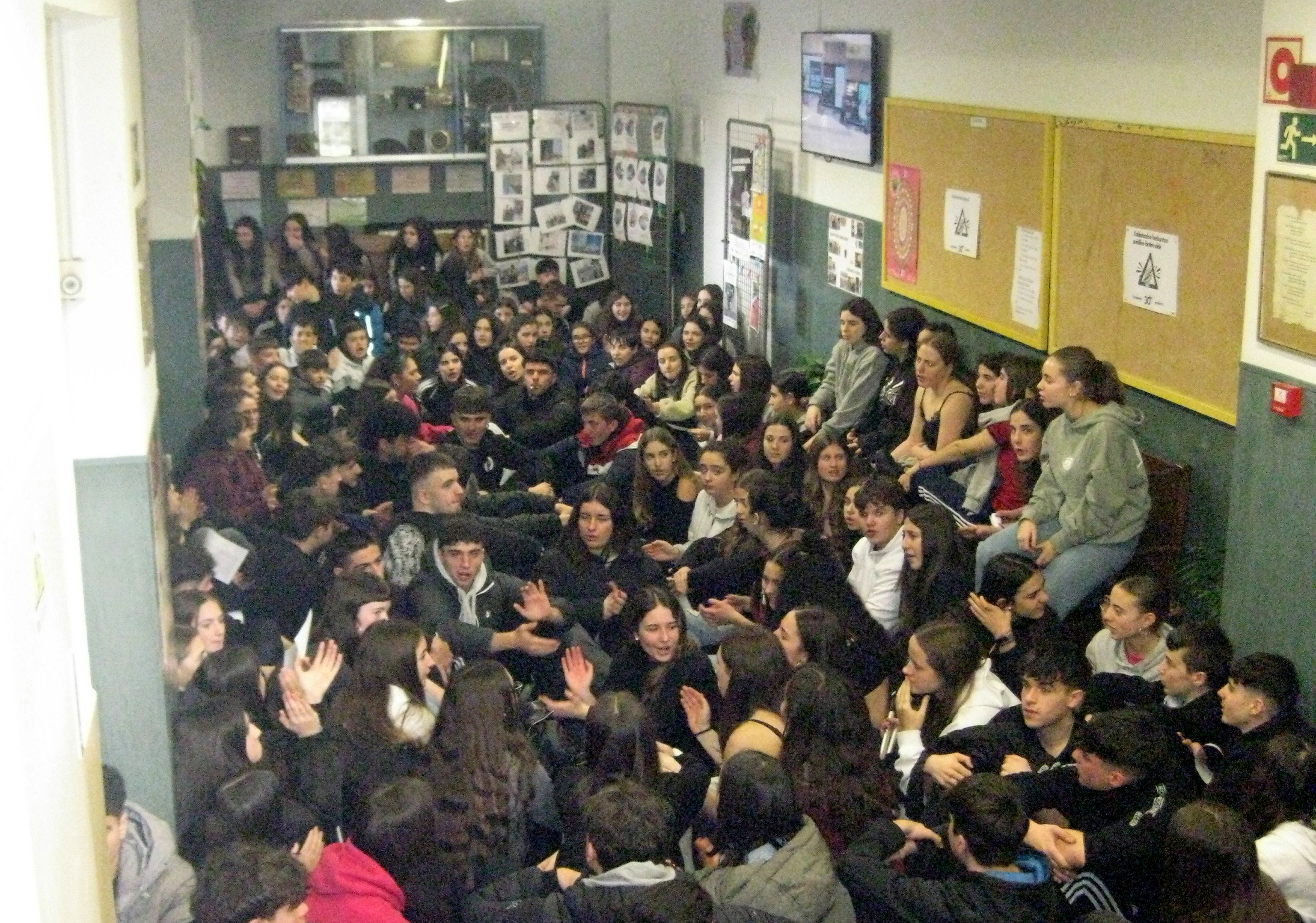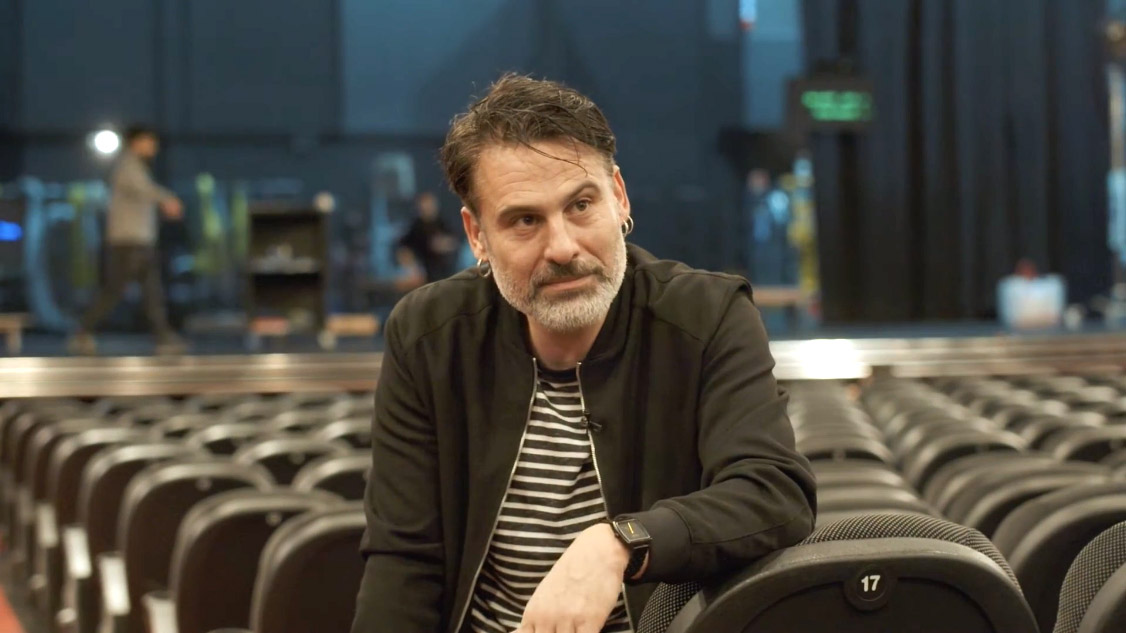This album is
A writer who was a neighborhood of Uxue in the columnist told me that once there came a time when, instead of saying “I read you the newspaper”, they said “I saw you in the newspaper”. It seems that it is now fashionable to put the photo of the author next to the text. I'd say it wasn't always like that. Iratxe Retolaza says that nowadays, in Basque literature (also), literary presences are consumed more than literature itself. Well, here you have another example of the importance of the presence; in the past, having the signature was one thing, now they say it falls short, you also have to put the photo.
If there is a writer of dispresence in us, we have Xabier Montoia without a doubt. That’s why it’s not surprising that the best solutions found for the photo account are yours. You will remember this portrait of him: in black and white, his profile on the left is exposed, his sunglasses, half of his face is covered by the shadow. It is not easy to guess how old you will be, it can serve exactly the same for the thirty or the fifty. They wouldn't accept it for the ID photo. You take the 1988 Narcissus' speech, and there's the photo, you take the sixteen-year-old Elect, and it's the same photo. Another option to avoid this uncomfortable obligation of photography is the album Yo no soy no Xabier Montoia, where instead of his own he put on the cover a photo of a musician –Iñigo Telletxe– who played with him.
As we are talking about photographic issues, there is also the case of the Family group (for the second time I mention the group in ttakunas, you may think that I am in the career of the Golden Drum). Apart from the fact that Javier Aramburu and Iñaki Gametxogoikoetxea produced a single album –Un soplo en el corazón–, they also took the only photo that appears together. They are both on the shore of a beach, neither of them looks at the camera, because of the clothes they are wearing, it seems that they are in winter. The album dates back to 1992, so it could be the winter of 1991-1992. The place? Who knows, but considering that they are both from San Sebastián, it seems reasonable that the one in the photo is one of its beaches. The sea is proud and I would bet on the option of the old beach of Gros. This sea cannot be that of La Concha or Ondarreta. Not even from Zurriola. The beach of Gros needs to be that far away in time, no doubt, when the groseros of my generation – and previous ones – took the first sea terrors.
When we talk about music, it’s funny how in the last album of another San Sebastián, Rafael Berrio in 1971, we talk about what and the beach of Gros, and about what and an old photo. This album is in an exciting song. The song describes the individual look at the photographs after taking an old photo album again. And the first lines say: “Mom on the beach, I think it’s Gros. Here he is together with the two. Daddy in bermuda, mommy on your side, smiling in the bathtub.” Imagine what the story will be in the depths of these three simple sentences. Mr Rafael will know it; Mr Rafael and, since we are talking about family issues, Mr Iñaki Berrio will also know it.
And since we are talking about column issues, Uxue, if your curiosity asks you for a new columnist, you can check it out with the great Iñaki Berrio; if you don’t already know him, of course. Thursday, in the official bulletin of Gipuzkoa.
Vagina Shadow(iko)
Group: The Mud Flowers.
The actors: Araitz Katarain, Janire Arrizabalaga and Izaro Bilbao.
Directed by: by Iraitz Lizarraga.
When: February 2nd.
In which: In the Usurbil Fire Room.









.jpg)

